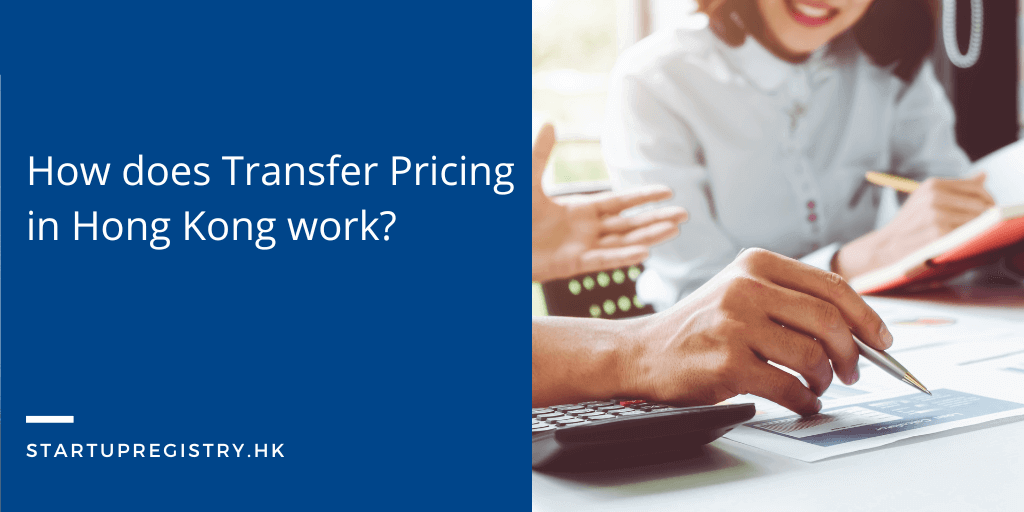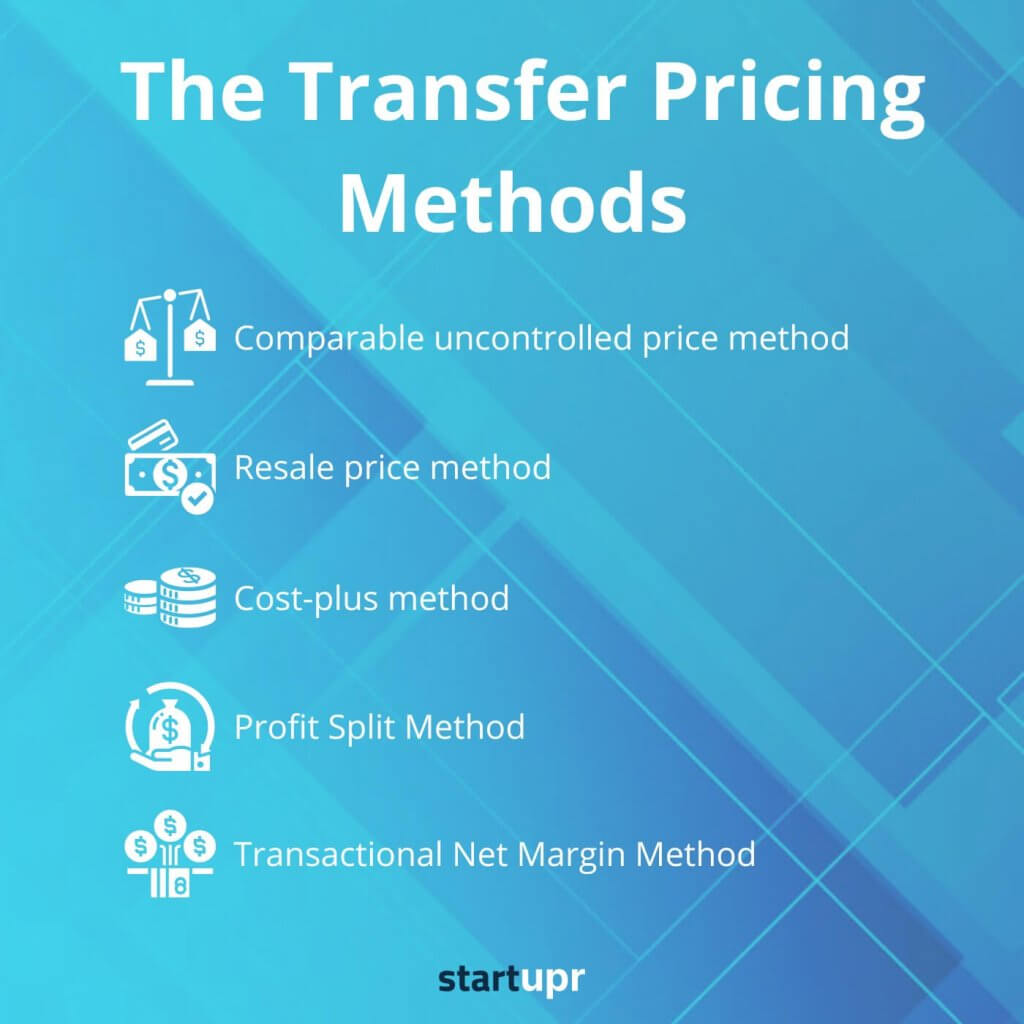Do you have a business in Hong Kong, or are you planning to have one? If the answer is yes, transfer pricing is one important thing you should know about; and we are here to help you understand it. After reading this article, you will have full knowledge of what transfer pricing is, from its meaning and history to the new guidelines you must know for your company to comply with the proper regulations and standards. We will also highlight for you all the various aspects of transfer pricing in Hong Kong, such as risk factors, advantages, and so much more.
- What is transfer pricing?
- History of transfer pricing.
- How does transfer pricing work?
- New Guidelines for transfer pricing.
- Why transfer Pricing is needed, and its methods.
So let’s dive in!

Transfer pricing in Hong Kong
Hong Kong is one of the most attractive business hubs in the world due to its low taxation and business-friendly environment. On the other hand, being the focal attention of most global financial activities puts this city under the microscope. Hence, keeping all rules, regulations, and important factors in mind while setting up your business here is essential. Let’s start with some basic definitions of transfer pricing, moving forward to how it will help you settle in.
Definition of Transfer Pricing
In simple words, transfer pricing (TP) refers to the accounting practice that displays the cost of transactions that have occurred internally between a Hong Kong business and its related companies. The transactions can be about sold goods, services, and even intangible properties.
Transfer pricing is mainly used by big companies, like multinational corporations (MNC), to save some money on taxes. A business that sells goods or services to a related entity is called a “parent company”; and when it does so, it can reduce the company’s tax burdens.
Note – Transfer pricing can also apply on intellectual property, which includes royalties and patents.
Now that the transfer pricing concept is clear, let’s look at some important background information about it.
How does transfer pricing work?
Transfer pricing allows pricing transactions to occur internally. These transaction transfers can occur between two or more subsidiaries of the same company. Multinational corporations can legally perform transfer pricing methods to distribute their earnings to their subsidiary or affiliated companies. However, it is also possible that MNCs can misuse this power only to reduce or shift their tax burdens.
The Organisation for Economic Co-operation and Development (OECD) has issued guidelines that propose various methods of determining transfer prices and examining the arm’s-length price of the controlled transactions.
Background story of transfer pricing in Hong Kong
The backbone of the transfer pricing legislation is the Arm’s Length Principle, which is also mentioned in article 9 under the Organization for Economic Co-operation and Development (OECD) model. This is a standard guideline featured in the most current Double Tax Agreements (DTA) of Hong Kong, that makes sure goods and services are sold to related companies at the same price that would have been sold to a non-related company.
On 13 July 2018, the Inland Revenue Department (IRD) announced an additional transfer pricing policy in Hong Kong; that gave to the same the power to regulate, for tax purposes, the non-arm’s-transaction exchanges between the parent company and its related businesses.
A little over a year later, the IRD came up with a series of additional transfer pricing guidelines called Departmental Interpretation and Practice Notes (DIPNs). We have summarised some below for ease:
- DIPN 58 – Transfer pricing documentation and County-By-Country reports
- DIPN 59 – Documentation of transfer pricing, which is between all the associated entities
- DIPN 60 – Attribution of profits to permanent establishments in Hong Kong establishment
New Guidelines for Transfer Pricing in Hong Kong
On 13 July 2018, a new transfer pricing regime came into existence in Hong Kong. This regime amendment was presented via inland revenue that falls under amendment no. 6, ordinance 2018 (amendment ordinance).
Here are some of the guidelines given by the IRD related to transfer pricing in Hong Kong.
- DIPN 45 – Provides relief from the problem of double taxation due to profit reallocation adjustment or transfer pricing.
- DIPN 46 – It contains methods and related issues of the transfer pricing
- DIPN 48 – It contains advanced pricing arrangements
- DIPN 49 – Part:B: It consists of tax on the royalties derived from the intellectual property license.
It is important to note that DIPNs and OECD guidelines are very similar in terms of key concepts, and can be hard to distinguish if you are not familiar with this. If you are still not sure about accounting guidelines, no panic – At Startupr, we have a team of professionals in place to support you with personalised accounting assistance to make your life easier.
Who is subject to transfer pricing legislation in Hong Kong?
In the paragraph dedicated to the history of TP, you might have picked up the term “Arm’s Length Principle”, which is crucial when it comes to transfer pricing legislations. So it’s good you’ll memorise this name as it will be very recurring.
Entities subject to the transfer pricing legislation are taxpayers that exceed the given threshold to maintain transfer pricing papers or transfer pricing documentation in Hong Kong. This consists of three main documents: the Master file, the Local fine and the Country-By-Country report. In addition to these, there are some criteria on which thresholds are dependent such as:
- Business size test
- Related-party transactions amount test
Business size test – a company is eligible for the business size test if at least two of the following three conditions are met:
- If the company exceeds its annual revenue of a total of HK$400 million;
- If the company has maintained an average of at least 100 employees;
- Or if the total assets value of that company is more than HK$300 million in total.
Related-party transactions amount test – along with the first condition, entities in Hong Kong that reach the maximum threshold income need to present the following transfer pricing evidence:
- The total amount of the company’s property transaction should exclude financial assets and intangibles exceeds HK$220 million.
- Transactions that include all the financial assets like equity, debt, investment, accounts receivables, etc., should be over HK$110 million.
- Annual transactions related to intangible assets that exceed the amount of JK$110 million.
- The total amount of other transactions must be HK$44 million, or over.
How and why do we comply with transfer pricing legislation?
Prepare Master File and Local File
To comply with the transfer pricing legislation, enterprises must prepare reasonable documentation to support their transfer prices along with the Arm’s Length Principle. As we briefly mentioned in the previous paragraph, here are some more details of the three-tier documents that enterprises must show according to the OECD:
- Master file – The Master file is a document that contains standard information useful and important for all the enterprise members.
- Local file: The Local file is a document that stores all the material transactions of the taxpayer.
- County-by-Country report: in this document, you will see all the enterprise’s taxes and income information. It also indicates locations in which economic activities occur.
The government has put transfer pricing legislation in place in order to, mainly:
- Minimize or lower the tax burden of Hong Kong companies;
- Facilitate the shifting of profits from one enterprise to another;
- Make sure that shifting the tax burden is not the only motive.
Methods of transfer pricing and why are they needed?
There are five methods of transfer pricing introduced by the OECD in order to regulate transfer pricing. Below is a detailed description of each method, if you wish to know more:

- Comparable Uncontrolled Price method – The comparable uncontrolled price method is also known as the CUP method. Here, we have to compare the price of goods, services, and conditions of a controlled transaction to the ones of an uncontrolled transaction. This process requires data that can consecutively be compared from commercial databases. If the comparison is different concerning the price of the transaction, then the Arm’s Length Principle will not apply. When that happens, the price in the transaction of such unrelated parties can be substituted by the controlled transaction.
- Cost-Plus method – The cost-plus method is traditionally used to identify a transaction between a supplier and the company. It is commonly used when related entities have long-term ‘buy and supply’ arrangements or transact semi-finished goods. Once the supplier’s cost is added, it gives the company a reasonable profit, which is considered while performing various market functions. When these prices are combined, they are Arm’s Length Prices for that transaction.
- Profit Split method – The profit split method is one of the two transactional methods introduced by OCTD. The prime focus of this method is to highlight how profits would have been divided within the enterprises by comparable transactions. This method can potentially remove any type of influence from special conditions. The process starts with identifying the profits from the controlled transaction that must be split. When profits are split between associate enterprises according to a comparable uncontrolled transaction, then it is the Arm’s Length Price-controlled transaction.
- Transactional Net Margin method – The transactional net margin method is the second transactional method introduced by the OCTD. This is used to assess the net profit against an ‘appropriate base’ that includes sales or assets resulting from a controllable transaction. According to OECD, taxpayers must ensure that the net profit indicator they apply in comparable uncontrolled transactions is the same.
Transfer pricing exemption in Hong Kong
Transactions that want to qualify for transfer pricing exemption in Hong Kong have to be domestic. In other words, we can say that the transactions made in respect of the business, trade, or person who resides or belongs to the Hong Kong jurisdiction should be eligible for transfer pricing exemption.
Other than the domestic transaction, transfer pricing can be exempted if the transaction is not used to avoid tax and does not have an actual difference in tax.
Penalties of non-compliance with transfer pricing legislation in Hong Kong
As we all know, rules and regulations by the government or any legal entity are made to be strictly followed by the citizens of that particular region, or they can incur legal sanctions and penalties.
If any individual or company is found guilty of non-compliance with transfer pricing legislation in Hong Kong, and the IRD can prove that they are involved in this type of activity with wilful intent, then they have to pay HK$ 10.000 fine, plus 100% to 300% of tax as a penalty. In some cases, there could also be a chance of up to three years imprisonment.
Get an accounting consultation for your business with Startupr!
Financial reporting and accounting-related responsibilities are noteworthy for standards. At Startupr, we are experts in Accounting and Bookkeeping services and so much more. Our company can assist you with various services, including Business Registration, Company Secretary services, Business Address & Mail Forwarding, and all based in Hong Kong. Get in touch with us today to find out how we can support your business growth from the early stages.


